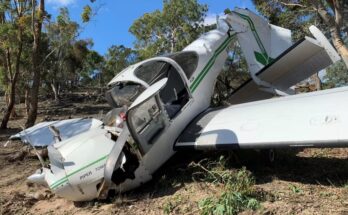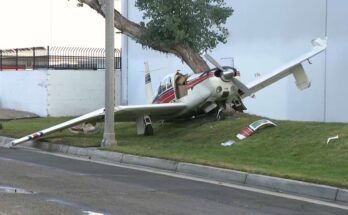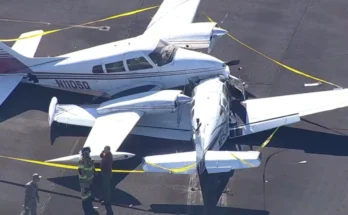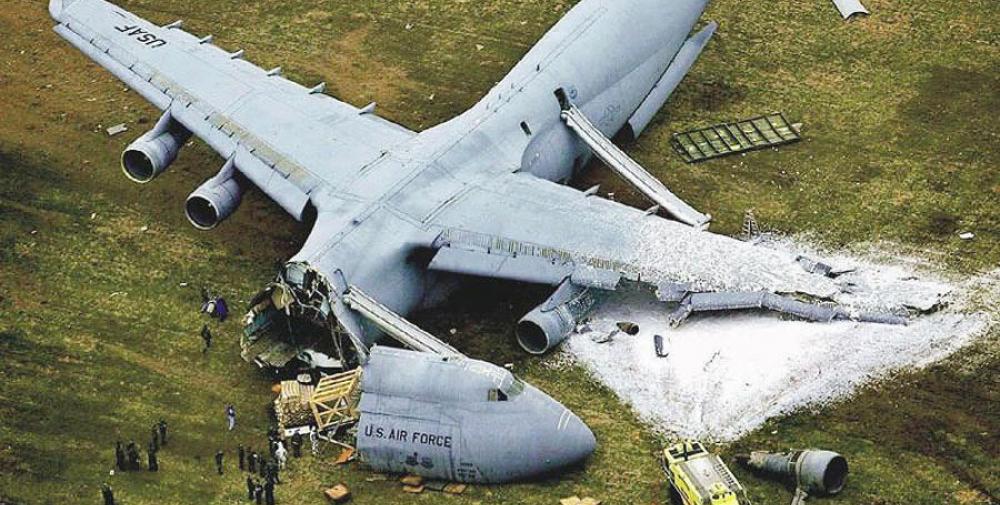
As the C-5 crew turned back toward Dover AFB in response to their engine malfunction, they could little realize they were about to fly to controversy, aviation lore, and disaster.
Jay Lacklen retired from the Air Force reserve in 2004 as a Lt Col with 12,500 flying hours. He taught Air Force T-1 pilot training simulators at Columbus AFB, Mississippi from 2005-2014. He grew up in Arlington, VA and graduated from the University of North Carolina-Chapel Hill in 1969. In addition to pilot training aircraft, he flew 330 hours in the C-7 Caribou, 2000 hours in the B-52 bomber, and 9,500 hours in the C-5 Galaxy transport.
He flew in all major military actions from Vietnam to the Iraq War. Lacklen lives in northern Virginia and is married with four adult daughters and two granddaughters.
Lacklen is also the author of three books, Flying the Line: An Air Force Pilot’s Journey, Flying the Line: An Air Force Pilot’s Journey Volume Two: Military Airlift Command and Flying the Line: An Air Force Pilot’s Journey Volume Three: Air Mobility Command. The following story comes the last book of the trilogy.
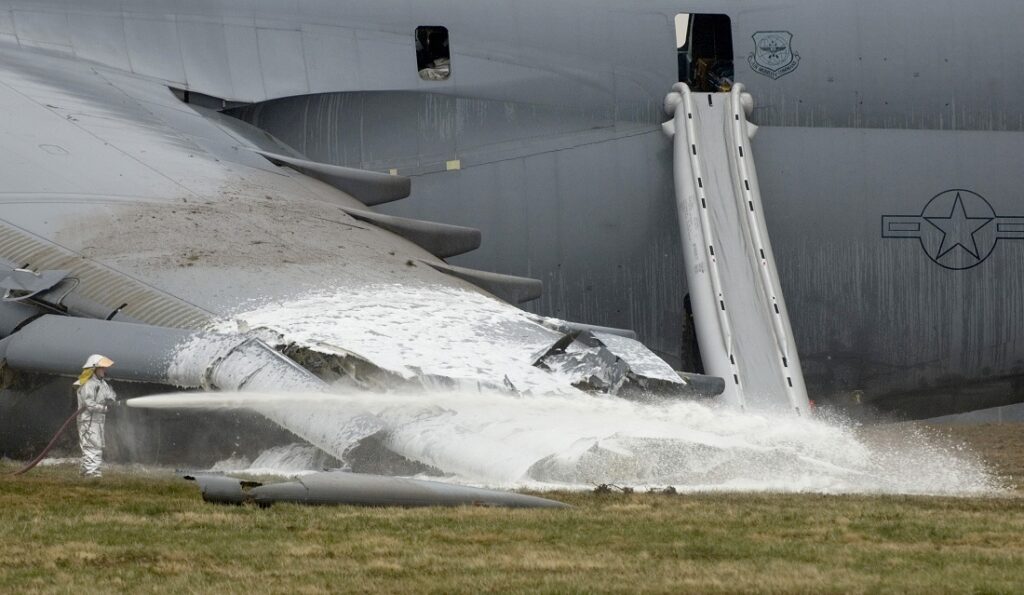
Effects of the crash varied with position in the airframe. Some of the few passengers and crew in the rear troop compartment initially thought the plane had merely made a hard landing.
Due to the whiplash effect of the tail contacting the ground first, the g-forces of the crash increased exponentially moving forward in the structure. This caused the fuselage to crack at the bulkhead that runs through the wall at the rear of the bunk rooms in the crew compartment.
As the plane slid across the field, the fuselage began to break open at the bulkhead. The instructor loadmaster was seated against the bulkhead facing rearward looking across the table at her two students. Suddenly the table and the students began retreating away from her as the fuselage began to open up. Eventually, the fuselage section with her students wound up at a right angle to her and ten yards away.
The cockpit, as previously state, hit the ground at 35 g’s. Although the airframe absorbed much of that force, the pilots all suffered back injuries. A passenger loadmaster in the troop compartment slid down the emergency slide and walked forward to the cockpit to help one of the pilots painfully come down the crew ladder to the ground. He helped him hobble to lay down against a tree on the side of the field. The loadmaster asked what had happened. The pilot said they were slamming the throttles against the firewall, but they couldn’t get any more thrust and couldn’t understand why they could not. They still did not realize they had the wrong throttle forward.
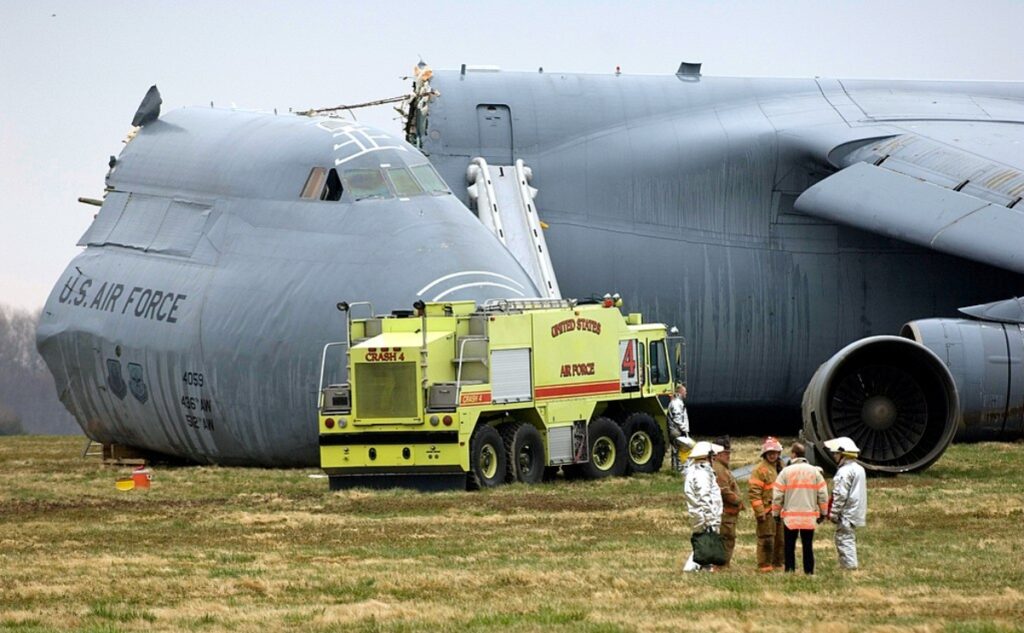
Training Analysis:
In some ways, our command training method contributed to this crash. When practicing for three-engine procedures, we always used the worst-case scenario which would be an outboard engine, either #1 or #4. When performing the go-around, we had to leave that engine at idle, obviously, or it wouldn’t be a three-engine go-around.
For this crash, however, an inboard engine was out. We never practiced for inboard engine failure, but the habit pattern of leaving the dead engine throttle at idle power prevailed. While it would be hard to confuse an engine failure between #1 and #4, it could easily be confused between #2 and #3, and it was.
In retrospect, the training procedure should have been either to use all four throttles with one engine actually inoperative or to place the dead engine’s throttle forward on the firewall. One of these techniques probably would have saved this crew. Not having thought of the possibility is attributable to us and the command for not preparing for such an event.
A second consideration was the instrument presentation. The new glass cockpit configuration for the new “M” model C-5 had been installed prior to adding the new engines to the airframe. These instruments presented a “Throttle position” indicator above an engine performance indicator. Viewing the throttle position gauge showed three engines advancing, but this meant only the throttle position advancing, not necessarily the engine. The lower gauge showed only engines #1 and #4 had been advanced in power. This confusion provided conflicting information to the crew and contributed to the crash.
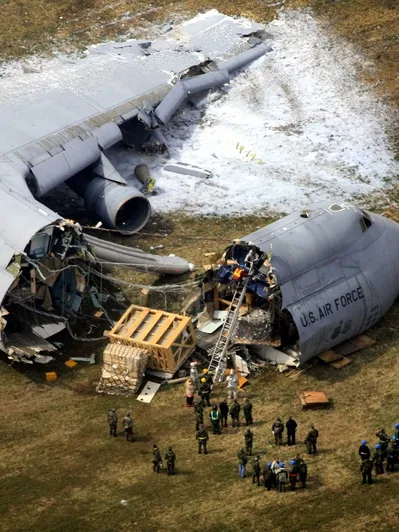
Lurking subconsciously were two distracting factors, the crew’s recent briefing on a hot brakes emergency a few months before, and the aircraft commander’s personality quirk that would erupt at just the wrong time.
The hot-brake imperative that seized the crew could have been overcome during the discussions of the emergency checklists that, catastrophically, were not run. Instead, the previous incident they had just been briefed on the day before seems to become their inappropriate priority.
Although there are many theories of the failures in this episode, I zero in on the aircraft commander, my protégé I had hired and protected for many years before I retired. He had revealed his personality quirk to me on his recommend ride for upgrade to aircraft commander in the descent to Hickam AFB, in 2004. As related earlier, when I chided him mildly for high airspeed in the descent, he stared me for a moment, then pushed the throttles up to max power before reducing them. He could not tolerate criticism or slights of any kind. His inexplicable throttle action provided a flashy maneuver to re-establish his prowess reputation despite the error he had made. When I finally, emphatically, confronted him about his airspeed a short while later, he shoved in full rudder to side-slip the plane, ludicrously and ill-advisedly, to decelerate and to make me forget his momentary airspeed lapse. I’ve suspected he knew he had this undesirable personality quirk. Perhaps this knowledge drove him to excel in all other areas to mask this chronic weakness.
